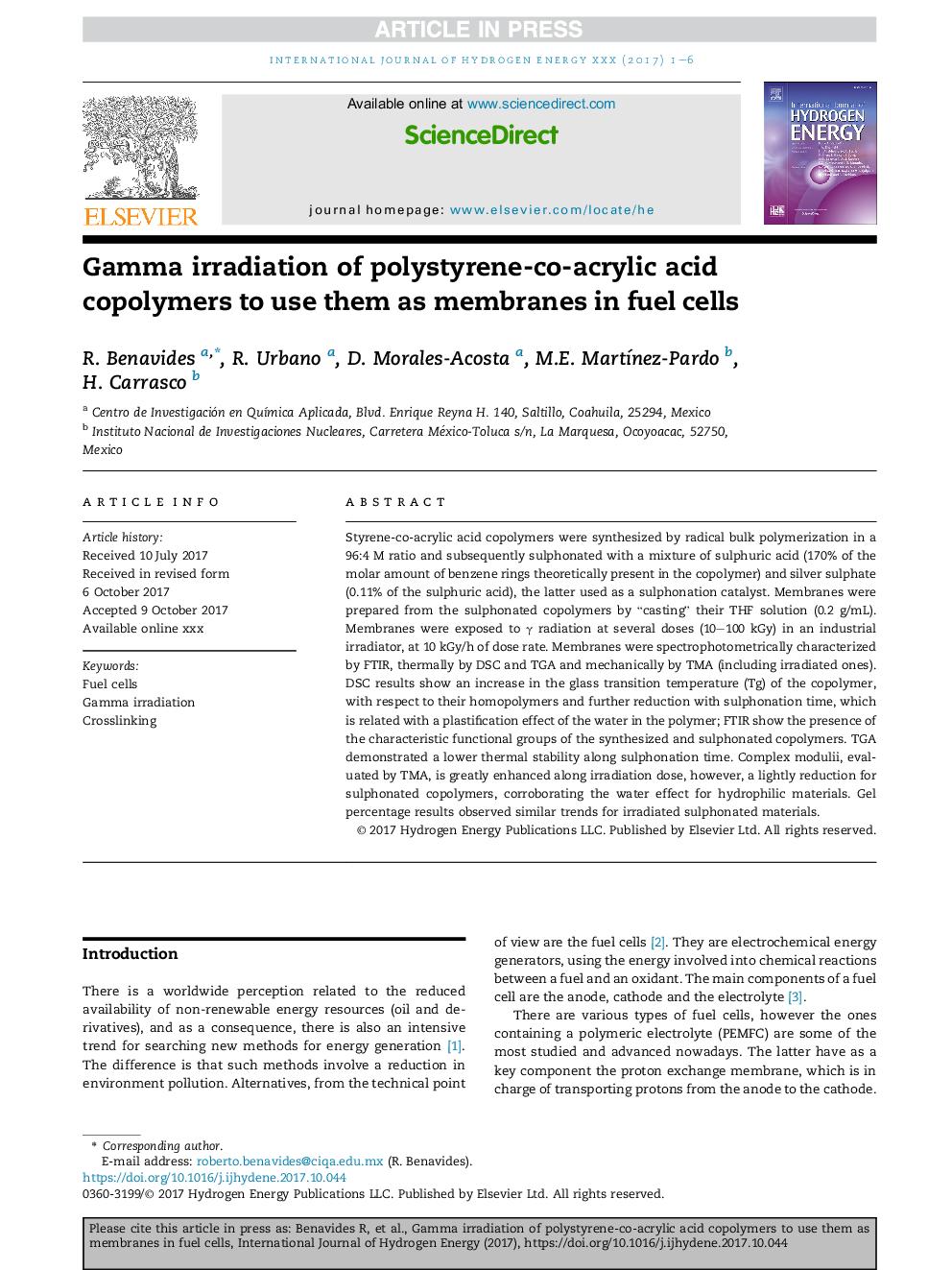| Article ID | Journal | Published Year | Pages | File Type |
|---|---|---|---|---|
| 7709006 | International Journal of Hydrogen Energy | 2017 | 6 Pages |
Abstract
Styrene-co-acrylic acid copolymers were synthesized by radical bulk polymerization in a 96:4 M ratio and subsequently sulphonated with a mixture of sulphuric acid (170% of the molar amount of benzene rings theoretically present in the copolymer) and silver sulphate (0.11% of the sulphuric acid), the latter used as a sulphonation catalyst. Membranes were prepared from the sulphonated copolymers by “casting” their THF solution (0.2 g/mL). Membranes were exposed to γ radiation at several doses (10-100 kGy) in an industrial irradiator, at 10 kGy/h of dose rate. Membranes were spectrophotometrically characterized by FTIR, thermally by DSC and TGA and mechanically by TMA (including irradiated ones). DSC results show an increase in the glass transition temperature (Tg) of the copolymer, with respect to their homopolymers and further reduction with sulphonation time, which is related with a plastification effect of the water in the polymer; FTIR show the presence of the characteristic functional groups of the synthesized and sulphonated copolymers. TGA demonstrated a lower thermal stability along sulphonation time. Complex modulii, evaluated by TMA, is greatly enhanced along irradiation dose, however, a lightly reduction for sulphonated copolymers, corroborating the water effect for hydrophilic materials. Gel percentage results observed similar trends for irradiated sulphonated materials.
Related Topics
Physical Sciences and Engineering
Chemistry
Electrochemistry
Authors
R. Benavides, R. Urbano, D. Morales-Acosta, M.E. MartÃnez-Pardo, H. Carrasco,
